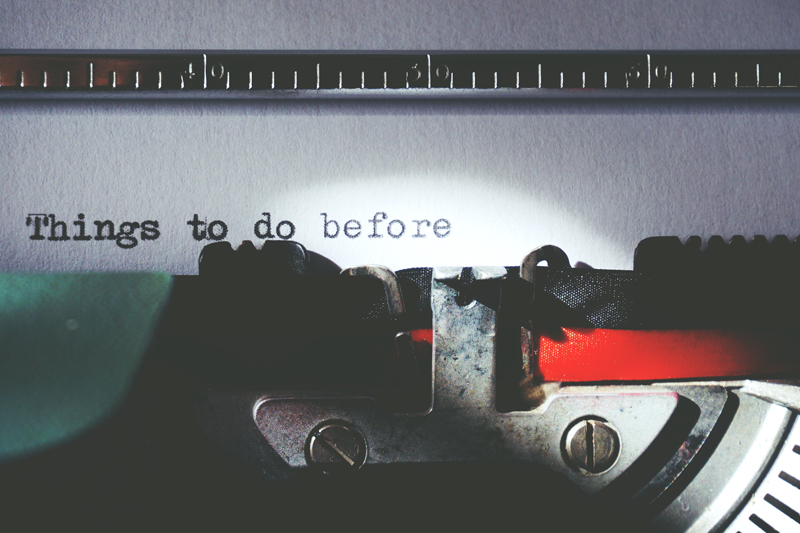HOW TO WRITE MEETING REPORTS?

Ahhhh the endless meeting minutes. Many of us find it as boring as the business meeting itself. It’s true, it’s not much fun as an exercise, but it’s an indispensable internal corporate communication tool! If, if … read more ????
The minutes: the keystone of the working meeting
What good is a meeting if nothing comes out of it? The meeting minutes are The essential document to keep a written record of the meeting’s proceedings and allow the team to take the actions decided upon during the meeting.
This document is in fact the complete report of the meeting, allowing to trace the exchanges, the discussions and the decisions taken. And this is more than often useful because, while the participants are present, many people during a meeting do something other than actually follow the exchanges.
This document therefore plays the precious role of an anti-drying tool, but also as a summary for those who are absent, as a list of actions to be carried out for the team, and as a monitoring tool for decision-makers.
But beware, it is not a question either of writing everything down in bulk on a sheet of paper. The meeting minutes must meet certain requirements and must be written according to precise criteria.
Meeting minutes: writing rules to be aware of
The purpose of the minutes of a meeting is to allow a person who did not attend to know what was said, decided and in what context.
It is therefore important that this document maintain a neutral tone.
1) Notes you will take during the meeting
This is obvious, but since not everyone writes in shorthand, it is not always an easy exercise.
Here are a few tips to speed up your note-taking without making you a pro at writing in shorthand.
- One in the meeting room, take the time to settle down, take out pens of different colors, stabilos and others that will allow you to highlight certain points.
- Use paper and pencil (and forget about the computer, which will waste your time).
- Prepare your draft in advance with the points that will be discussed.
- Name your participants with letters (AD is shorter than Alain Dupont)
- Use diagrams as soon as possible and remember to include captions
- Use tables as soon as possible
- Take pictures of what is written on the board or flipchart.
- Use abbreviations
2) Immediately afterwards you will write up the minutes of your meeting.
And yes, you can work your memory to the max and eat fish, but the longer you wait, the harder it will be to write a clear and effective report.
Immediately afterwards you will write up the minutes of your meeting.
And yes, you can work your memory to the max and eat fish, but the longer you wait, the harder it will be to write a clear and effective report.
Review your notes and start it as soon as possible so that you don’t miss anything important. Remember that the purpose of the meeting minutes is to clearly formalize decisions in terms of actions to be taken, deadlines and the sharing of responsibilities.
3) This information you will not forget to put in your report
- The name of the group / title of the meeting
- The date
- The place
- Start time
- End time
- Names of invited participants
- Names of those present, absent and excused
- The name of the facilitator
- The agenda in plan form
4) In this way you will express yourself in your account
In general, when writing meeting minutes, put yourself in the reader’s shoes. It is better to start with a structured and fluid text (with headings, subheadings, lists etc) and even diagrams and tables, than a question-answer system that does not allow you to highlight the important points.
Also choose a time system and wording that is identical throughout your document.
- Time system: https://www.francaisfacile.com/exercices/exercice-francais-2/exercice-francais-93204.php
- Discursive or historical enunciation: http://research.jyu.fi/grfle/501.html
Either you focus your story on what the participants say in the meeting (“AD says that …”), or you focus it on the purpose of the meeting by tracking the progress of the discussion.
5) At the verification of your meeting minutes, you will
Once the first draft has been made, read it again to check that you have not made any mistakes in the exchanges that take place, the decisions made, etc., and of course typing mistakes, spelling mistakes …
Also take the opportunity to clarify a few terms and use synonyms so as not to repeat the same words too often (as we do in this article with “meeting” and “minutes” ????).
6) Your report you will document
Remember to attach the presentation that was made during the meeting, diagrams and other documents as an appendix to your minutes.
7) Upon proofreading your minutes you will submit
To make a good report … nothing beats proofreading, preferably by the facilitator himself if it is not you. Before any broadcast this step is essential. It avoids misunderstandings (anyone can make a mistake) and allows you to clarify certain points if you have been too “light” in your writing.
8) After diffusion your report will be archived.
Archiving is important especially when working in project mode. It is enough that at the next meeting, a debate opens on the decisions taken at a previous meeting and hop … the minutes are there to remind everyone what was decided. It’s also a document to track the progress of the project, so save it carefully.
Finally, use the meeting minutes to help you organize the next working meeting of your group. This will help you define the participants and the agenda.



